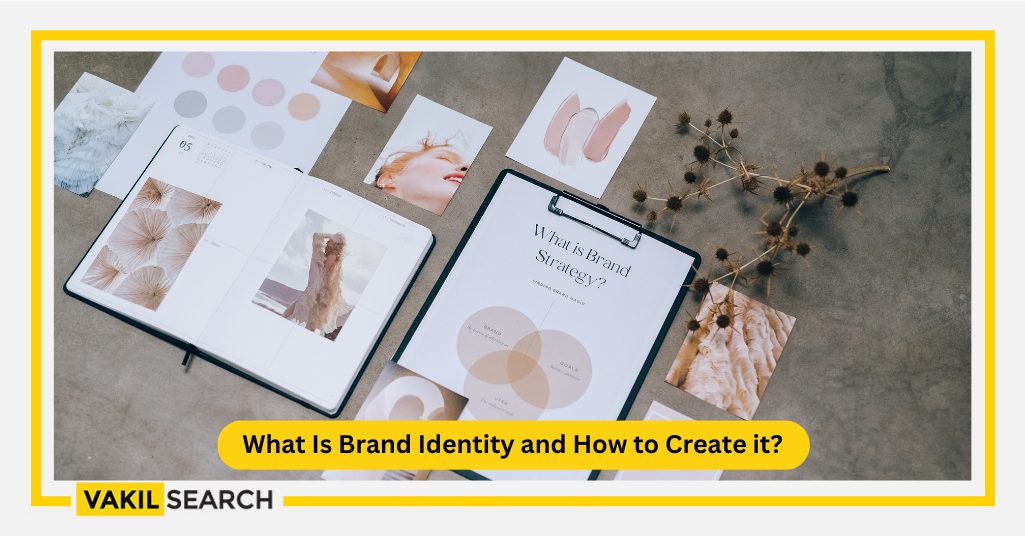It's about carving out the essentials of creating a brand identity, in addition to learning what makes a good branding strategy and how starting early can provide you with additional benefits in the long run.
Businesses, especially those catering to mass consumer segments, have been spending huge amounts on getting a flicker of recognition in our minds for centuries. lets see What is Brand Identity and how to create it ?
The industry has become obsessed with making itself unforgettable, resulting in burgers named after McDonald’s, Xerox photocopying machines called Xerox, Maggi noodles called ‘Maggi‘ and Google search turned into ‘to Google‘.
What Constitutes of Brand Identity?
According to law, all intellectual property owned by a company can be considered it’s brand. Trademarks, taglines, logos, copyrights, and even videos and audio content that make up advertisements can be protected.
Furthermore, there are elements which cannot be monopolized, such as a colour scheme – McDonald’s red and yellow or Cadbury’s deep purple – which are nevertheless very important to holding consumer attention.
Thus, all visible elements of a brand, such as colour, specific marks such as the tick of Nike, a name ancillary to product function such as Whirlpool are all becoming increasingly important requisites of acquiring a brand identity.
Deciding on a Unique Branding Strategy
The purpose behind the brand – When in the initial stages of chalking out a branding plan, a company must think long and hard about the deeper values it aims to leave the customers with. Trust is one factor that almost all brands aim to advertise. A name like Classmate for stationery exudes comfort and trust. Many insurance and banking companies also focus strongly on coming across as reliable and trustworthy, through campaigns and tag lines such as ICICI Bank’s ‘Khayaal Aapka’.
Consistency – The key to making a lasting impact is making sure that the marketing and branding strategies across multiple media such as newspapers, audio and visual advertising, PR events and online services are consistent. New and innovative forms of consistent branding have emerged and are replacing age-old strategies.
For example, the indigenous beer-making company Bira has fun quirky ads and spent enormous amounts promoting the brand at the recent World Cup, a popular strategy once adopted by Pepsi and Coca-Cola, but little explored by alcoholic beverage companies.
Mascots and Public Figures – Faces of the Brand – In the past, celebrities and their stardom were crucial to adding glitzy value to a brand and glamorising its features. While there’s no denying that celebrity endorsements are here to stay, the upcoming trends are tilting towards innovative mascots, such as the all-time favourite Amul Girl, Appy’s champagne-shaped talking bottle, Zoozoos and Pugs made famous by Vodafone and the quirky guy featured in Trivago advertisements. A celebrity’s stardom may fade, but unique mascots that make the central character of the brand are hardly forgettable.
Colour coding the brand – What’s with Yellow, Red and Green – When we think of some of the most famous Brand Logo Design, we realise the strategic importance of colours.
Coca Cola, Amul, KFC are all in red. McDonald’s and Maggie are in bright yellow. Pepsi, PayTM and Nestle are all blue. Starbucks and 7Up are dark green. Most others are a combination of these colours, such as SubWay (Yellow and Green), Google (Yellow, Green and Red), and MasterCard (Red and Yellow).
Several psychology studies show that colours have a deep potential to impact our subconscious sentiments. Yellow colour gives out a fun, happy vibe, red stands for strength, and love and green for trust, solidarity and wisdom. While primary colours are considered desirable, don’t hesitate to play around with a mix of colours. What one should really be careful about is keeping it simple. Simplicity eases printing and replicating the logo on a host of materials, on a tiny app thumbnail as well as a large hoarding.
Deciding the Branding plan – Whether you’re an early-stage company or an established business, a well-thought-out strategy that includes a structured marketing and branding regime is essential to building brand values.
Digital, online, apps, newspapers, lifestyle magazines, radio and video commercials are several alternatives, and a mix of these should be used for targeted advertising. Sponsoring events and setting up exhibits are also great ways of making the brand known.
Why Must You Start Your Branding Process Early?
There are several advantages of having a head start in the branding process. If your business is still under development, branding helps build a certain momentum before you actually launch the product. Moreover, with domain names and websites assuming a crucial role in online marketing, your investors and potential consumers could be attracted by an impressive branding strategy. Legally, the advantage of starting to use certain trademarks early is that they can be registered and hence protected from infringement sooner.
Conclusion
It should also be noted that even in cases where a trademark is not registered, courts are inclined to favour the party who has used the trademark first in the event of a possible infringement suit. We hope that our information about What is brand Identity and the way to build it would helped you.
Read More:-

